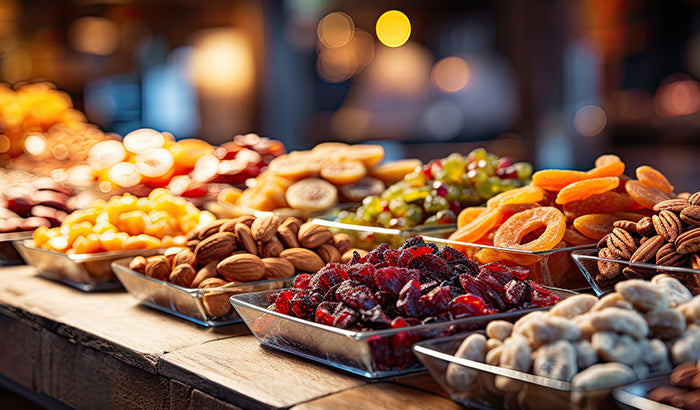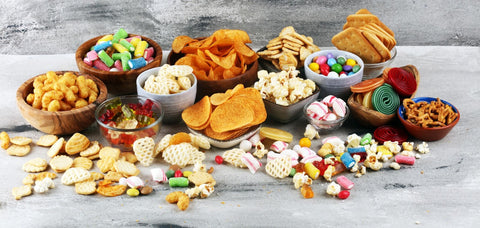
Is Freeze Drying The Same As Dehydrating? The Difference Explained
In the vast and flavorful world of food preservation, two techniques steal the show: freeze drying and dehydrating. Though they share the limelight in extending the life of our beloved foods, their paths to achieving this feat couldn't be more distinct.
As we peel back the layers of these preservation giants, a fascinating tale of science, tradition, and culinary innovation unfolds. This journey isn't simply about keeping food from spoiling; it's a deep dive into how each method brings its unique flair to our tables, transforming how we store, enjoy, and savor the essence of ingredients from around the globe.
Whether you're a seasoned food preservationist or a curious kitchen adventurer, understanding the nuanced dance between freeze drying and dehydrating will elevate your food storage game and open your palate to a world where flavor and nutrition lock arms with longevity.
So, buckle up as we embark on a flavorful expedition to explore the distinctive realms of freeze drying and dehydrating, uncovering the magic behind each technique and how they shape our eating experiences.
Freeze drying: a cool preservation method
Imagine you're an astronaut floating in space, about to dine on some strawberries that taste as fresh as those from a garden. Or enjoy your favorite candies, such as Skittles, salt water taffy, and marshmallows in freeze dried form. That's freeze drying for you.
Officially known as lyophilization, freeze drying is a process that involves freezing the food quickly to below freezing point and then reducing the surrounding pressure. This causes the frozen water in the food to sublimate from ice to vapor directly.
The equipment needed for freeze drying is quite specialized and on the pricier side. You're looking at a machine that essentially sucks the life out of ice, turning it into vapor and leaving behind food that's as light as a feather and as dry as a comedian's wit.
The beauty of freeze drying lies in its ability to preserve the food's cellular structure, nutritional content, and aroma. It's like hitting the pause button on food's natural decaying process without sacrificing its soul.
Dehydrating: the age-old tradition
Now, let's turn the clock back — way back — to when our ancestors discovered that food could last longer if left out in the sun to dry. Dehydrating food is essentially the art of removing moisture using air circulation and heat. This may be as simple as leaving food in the sun or as controlled as using an electric dehydrator.
The process of dehydrating doesn't require fancy equipment. A good dehydrator usually costs less than a fancy dinner for two, making it accessible for most home kitchens. Dehydrating forces water out of the food through heat and airflow, creating an environment conducive to drying.
Though it's more of a brute-force approach compared to freeze drying, dehydrating has its charm. The slow evaporation of water concentrates flavors, making for deliciously intense dried fruits, vegetables, and meats.
Diving deeper into the differences
Let's break it down further. Freeze drying is like that cool, sophisticated friend who knows how to preserve the essence of every party without breaking a sweat. Foods retain their original shape, color, and, most importantly, their nutritional value. They rehydrate quickly and almost perfectly back to their original state. This makes freeze dried foods excellent for space missions and backpackers, emergency food storage, and everyday snacking.
Dehydrating, on the other hand, is like the friend who's been around, knows a few tricks, and doesn't need fancy gadgets to get the job done. The process does alter the food's texture and sometimes its flavor.
Nutritional content, especially vitamin C and some B vitamins, which are heat-sensitive, diminishes during dehydration. However, dehydrated foods still offer a fantastic shelf life and provide a nutritious, lightweight option for snacks, cooking, and emergency food supplies.
The verdict: which one to choose?
Deciding between freeze drying and dehydrating depends on your needs, budget, and how you plan to use the preserved foods. Freeze drying is unbeatable for preserving quality, nutritional value, and taste. It is ideal for preserving various foods, including dairy products, whole meals, and delicate fruits and vegetables. It's perfect for those serious about long-term food storage and maintaining food quality.
Dehydrating is budget-friendly, accessible, and great for making snacks like jerky, dried fruits, and vegetables. It's well-suited for home cooks, gardeners looking to preserve their bounty, and anyone interested in making their own trail food. While it may not preserve food as comprehensively as freeze drying, it still significantly extends shelf life and enhances flavor more affordably.
What have we learned?
As we wrap up our exploratory journey through the fascinating worlds of freeze drying and dehydrating, it's clear that these methods are more than mere techniques for food preservation — they're gateways to culinary innovation, sustainability, and enhanced food enjoyment. Each method, with its unique set of characteristics, offers a distinct approach to extending the life of our foods without compromising on the essence of what makes them delightful.
Freeze drying emerges as the modern marvel, a testament to human ingenuity in preserving our foods' nutritional integrity, texture, and flavor in a form that's as close to its original state as possible. It's an invitation to explore the limits of preservation.
Anyone is able to enjoy high-quality meals, irrespective of where they are or the resources at hand. While requiring an upfront investment in specialized equipment, this method pays dividends in the quality and longevity of preserved foods, making it an invaluable tool in the quest for sustainable living and emergency preparedness.

On the flip side, dehydrating is a time-honored tradition, a method steeped in simplicity and accessibility. It reminds us of the power of elemental forces — air and heat — in transforming foods into durable, flavor-concentrated forms.
Dehydrating invites us into a world of rich tastes and textures, from chewy jerky to crispy fruits and vegetables, all while offering an affordable and approachable method for preserving the bounty of our gardens and markets.
Choosing between freeze drying and dehydrating doesn't have to be an either/or proposition. Instead, it celebrates diversity in preservation methods, each suited to different needs, preferences, and culinary goals.
Whether you lean towards the high-tech sophistication of freeze drying or the rustic charm of dehydrating, the ultimate goal remains the same: to honor the abundance of nature by extending the enjoyment of its flavors and nourishment.
The journey through freeze drying and dehydrating reflects our collective desire to connect with our food, understand its journey from farm to table, and preserve its goodness for future enjoyment. As we continue exploring these preservation methods, we become guardians of our culinary heritage and pioneers in sustainable living.
So, as you stand at the crossroads of freeze drying and dehydrating, remember that each path offers its own adventure, full of flavors waiting to be discovered and savored. The choice is yours, and the possibilities are endless.
Discover the unique world of Candy Jan's freeze dried delights!
Dive into a fantastic assortment of freeze dried candies and treats that promise to transform your snacking moments into unforgettable experiences. Make your way to Candy Jan and peruse our wide selection of freeze dried wonders.
Are you only beginning to explore the world of freeze dried snacks? Start with our introductory sampler packs. And for those who already cherish these treats, explore our extensive collection of all-time favorites!
Experience the unmatched flavors and learn what makes Candy Jan's freeze dried treats so captivating. Do you have questions, or are you simply curious? Contact Candy Jan today — we're excited to assist you on your journey of taste discovery!
